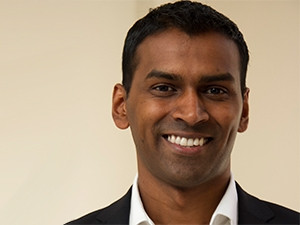
For organisations to lead in a digital world, leaders need to ensure that they organise their organisation to drive its relevance. To achieve this they need to start by identifying what's going on in this digital world. Doing things from a digital perspective means looking at process optimisation and challenge the way processes work, while re-imagining new ways and new processes of doing things.
So said Lee Naik, MD at Accenture Digital, speaking at the Oracle Digital Day 2016 conference yesterday. Naik explained as organisations become commoditised; a disruptive business model is necessary, which should be accompanied by a leader who will be the organisation's chief disruptor. However, he pointed out that current business leaders are too busy focusing on other priorities instead.
"The reason why organisations are disrupted by other organisations who have adopted digital tools to drive their business is not because they didn't have a customer relationship management (CRM), or because they didn't have automation in their businesses but because they did not disrupt their own business model to get ahead of the game.
"If the CEO is trying to move the entire ship forward, and the CMO is fighting with CIO about who owns the brand and customer experience, while the CFO and COO are too busy driving efficiencies, who's worried about the next phase of the organisation and steering it towards digital adaption?," he asked.
He outlined three digital trends from the past year and how they affect digitisation of businesses, while influencing disruption.
"The three trends which will help organisations decide on a leap change are 'digitisation of everything', 'liquid expectations', and 'trapped intelligence'," he continued.
The digitisation of everything
Our world is becoming intrinsically digital, which is part of who we are. The strategy our organisations need is not a digital offering: it's more than figuring out what your cloud strategy is, but rather finding out what does digitally connected mean for your business, he pointed out.
"By the year 2020 there will be 50 billion devices connected on the Internet. These devices are much more than just tablets and phones; they also include sensors embedded into the beds we sleep in and into our pot plants. In future these sensors will be able to send a message to its owner when it needs water instead of having the owner water the plants once or twice a week," he observed.
Liquid expectation
Consumers today, continued Naik, are setting a different bar for experiences; they have become fickle and hard to please.
"Our customers are comparing us to different things, if you're a bank, they're not comparing your services to those of other banks, but rather the benchmark now becomes WhatsApp, Instagram, and other digital tools available out there. In a digital world there is a growing gap between what's being delivered and consumers' ever-evolving expectations," asserted Naik.
Trapped intelligence
Trapped intelligence, he revealed, is when companies use a strategy to get close to their customer in order to better understand them. "Some companies give customers free smart watches. This is not necessarily because they want them to be healthy, but rather because they want to have a better risk profile of who they are and understand their daily habits," he added.
"In a typical organisation you sit in a product design team in a strategy session and talk about how last year's profit was. However, we hardly ask the customers for feedback. Organisations are being disrupted all the time, but we never see it coming. Digitisation of channels is the company's initiative that talks to CRM which is a combination of people, processes and technology that seeks to understand a company's customers. Optimising the inside operating model is about how organisations deliver services, not what they deliver," he concluded.
Share